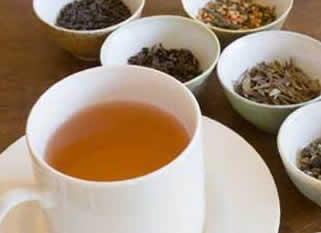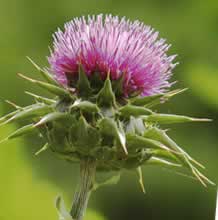
Blue cohosh, squaw root, papoose root, blue ginseng, yellow ginseng
Blue Cohosh (Caulophyllum thalictroides) is perennial herb that is native to North America and Asia. Blue cohosh has long been used as herbal medicine by native Americans to prevent pregnancy, induce labor, help menstrual flow, treat menstrual cramps, as laxative, and to treat other medical conditions.
Blue cohosh plant is a perennial plant that grows to a height of about 1 to 2 feet. Blue cohosh has a simple, round, erect and high stem that grows from a knotty rootstock Blue cohosh bears a large, tri-pinnate leaf whose leaflets are oval, petioled, and unequally lobed. Blue cohosh bears a 6-petaled, yellow- green flowers, Blue cohosh flowers mature to bitter, bright blue seeds that resembles berries on thick stripes. Blue cohosh fruit Is about the size of a pea, dark blue in color, borne from as fleshy stalk.
Blue cohosh contains variety of chemicals including alkaloids and saponins which may be responsible for uterine-stimulating effects. There are many traditional uses for this herb as practiced by Native American people, however limited medical and scientific research may support its claimed health benefits.
Female reproductive system. Blue cohosh has a long folkloric medicinal use for the female reproductive system providing health benefits for the following:
Blue cohosh is also used to treat colic, sore throat and hiccups.
Blue cohosh has a history of being used to treat epilepsy and hysterics.
Anti-inflammation. Blue cohosh is widely used to treat symptoms of rheumatism, arthritis, joint and muscle pains.
Skin Conditions. Blue cohosh is also used to treat various skin problems such as acne, warts and dry skin.
Fever. It is effective in alleviating the symptoms of fever, colds, cough and flu.
A newborn infant whose mother ingested an herbal medication, blue cohosh, to promote uterine contractions presented with acute myocardial infarction associated with profound congestive heart failure and shock. The infant remained critically ill for several weeks, although he eventually recovered. Other causes of myocardial infarction were carefully excluded. Blue cohosh, Caulophyllum thalictroides, contains vasoactive glycosides and an alkaloid known to produce toxic effects on the myocardium of laboratory animals. We believe this represents the first described case of deleterious human fetal effects from maternal consumption of blue cohosh. Source: The Journal of pediatrics. 1998 Mar;132(3 Pt 1):550-2.
Blue cohosh is available in most health stores in tincture form. Blue cohosh is also used in combination with other herbal medicines.
Blue cohosh is also commercially prepared in powder, tincture and capsules taken as supplements. They are available in most fitness and health stores. Blue cohosh is also available online via Amazon as listed: Solaray Blue Cohosh Root Capsules for example, there are other brands, be sure to select one from a reputable manufacturer and do follow the suggested dosage.
Blue cohosh is usually taken internally and dosage should not exceed 6ml per day.
Blue cohosh capsules as supplement. Taken as directed.
Blue cohosh ointment prepared as a salve ointment, applied to skin 3 times daily.

You can add other herbs or honey to improve the efficacy and taste. See side effects.
Blue cohosh extract from leaves and barks and fresh berries may be poisonous. if taken by mouth it can cause shock, nose bleeding, nausea, vomiting, high blood pressure, difficulty in breathing and potential damage to the kidney.
Blue cohosh extract from roots may potentially be unsafe if used in excess. It can cause high blood pressure, increase in blood sugar level, vomiting, nausea, diarrhea and kidney damage.
Blue cohosh herbal extract is not to be given to children.
Contact dermatitis. Blue cohosh can cause allergic reaction to sensitive people.
Blue cohosh has been found to cause fetus malformation, thus use is discouraged for pregnant women until labor has commenced.
Blue cohosh has been reported to cause acute myocardial infarction and shock to new born babies.
Use of Blue cohosh herbal extract is also not recommended during pregnancy and lactation.
Blue cohosh is not advisable for prolonged use due to potential risk of poisoning. Medical supervision is adviced.
Heart conditions: There are reports that blue cohosh might worsen heart conditions. According to research, Blue cohosh has a narrowing effect to the blood vessels thus it can decrease blood circulation, increase blood pressure and makes the heart works harder while depriving much needed oxygen.
Diabetes: There are some reports that Blue cohosh use has caused the blood sugar level to increase. Consult with your doctor if you plan to use Blue cohosh.
Hormone-sensitive conditions. Blue cohosh may affect the homone production in women and should be avoided when dealing with such conditions as uterine cancer, breast cancer, endometriosis and uterine fibroids.
Blue cohosh is a potent herbal medicine and the full extent of its interaction with drugs and other herbal medicines is undetermined. However, Blue cohosh should not be taken simultaneously with the following;
Blood pressure medication. Blue cohosh has been reported to increase blood pressure, Blue cohosh may counter the effects of these drugs.
Medications for diabetes. Blue cohosh may increase blood sugar level, making the effects of these drugs less effective.
 Silymarin extract still tops in liver protection
Silymarin extract still tops in liver protection Santan Flower has wound healing properties
Santan Flower has wound healing properties  Antioxidant properties from Talong
Antioxidant properties from Talong Malvarosa Plant found to have antioxidant properties
Malvarosa Plant found to have antioxidant properties Anti-cancer properties of Avocado fruit
Anti-cancer properties of Avocado fruit Stevia use can cause cancer, studies suggests
Stevia use can cause cancer, studies suggests